Rate Distortion Theory & Quantization
Rate Distortion Theory & Quantization
Rate Distortion Theory
Rate Distortion Function
for Memoryless Gaussian Sources
for Gaussian Sources with Memory
R(D*)
R(D*)
Scalar Quantization
Lloyd-Max Quantizer
High Resolution Approximations
Entropy-Constrained Quantization
Vector Quantization
Thomas Wiegand: Digital Image Communication
RD Theory and Quantization 1
�
Rate Distortion Theory
Rate Distortion Theory
Theoretical discipline treating data compression from
the viewpoint of information theory.
Results of rate distortion theory are obtained without
consideration of a specific coding method.
Goal: Rate distortion theory calculates minimum
transmission bit-rate for a given distortion and
source.
R
D
Thomas Wiegand: Digital Image Communication
RD Theory and Quantization 2
�
Transmission System
Transmission System
Distortion
D
U
Source
Coder
Decoder
V
Sink
Bit-Rate
R
Need to define , , Coder/Decoder, Distortion , and
U V
D
Rate
R
U
Need to establish functional relationship between ,
, , and
V D
R
Thomas Wiegand: Digital Image Communication
RD Theory and Quantization 3
�
Definitions
Definitions
Source symbols are given by the random sequence
• Each assumes values in the discrete set
Uk
- For a binary source:
- For a picture:
U = {0,1}
U = {0,1,...,255}
{Uk}
= {u0,u1,...,uM 1}
• For simplicity, let us assume to be independent and
identically distributed (i.i.d.) with distribution
{P(u),u U}
Uk
Reconstruction symbols are given by the random sequence
{Vk}
with distribution
{P(v),v }
• Each assumes values in the discrete set
• The sets and need not to be the same
Vk
= {v0,v1,...,vN 1}
Thomas Wiegand: Digital Image Communication
RD Theory and Quantization 4
�
Coder / Decoder
Coder / Decoder
Statistical description of Coder/Decoder, i.e. the mapping of the
source symbols to the reconstruction symbols, via
Q = {Q(v | u),u ,v }
is the conditional probability distribution over the letters of the
reconstruction alphabet given a letter of the source alphabet
Transmission system is described via
Joint pdf:
P(u,v)
P(u) =
P(v) =
P(u,v)
P(u,v)
v
u
P(u,v) = P(u) Q(v | u)
(Bayes‘ rule)
Thomas Wiegand: Digital Image Communication
RD Theory and Quantization 5
�
Distortion
Distortion
To determine distortion, we define a non-negative cost function
d(u,v),d(.,.) : [0,)
Examples for
d
• Hamming distance:
d(u,v) =
0,
1,
for u v
for u = v
• Squared error:
d(u,v) = u v 2
Average Distortion
D(Q) =
P(u) Q(v | u)
1 2 4 4 3 4 4
d(u,v)
u
v
P(u,v)
Thomas Wiegand: Digital Image Communication
RD Theory and Quantization 6
�
Mutual Information
Mutual Information
Shannon average mutual information
I = H(U) H(U |V )
P(u) ld P(u) +
=
u
u
v
P(u,v)
ld P(u | v)
= -
u
v
P(u,v)
ld P(u) +
P(u,v)
ld
u
v
P(u,v)
P(v)
=
u
v
P(u,v)
ld
P(u,v)
P(u) P(v)
Using Bayes‘ rule
I(Q) =
u
v
P(u) Q(v | u)
1 2 4 4 3 4 4
ld
P(u,v )
Q(v | u)
P(v)
with P(v) =
u
P(u) Q(v | u)
Thomas Wiegand: Digital Image Communication
RD Theory and Quantization 7
�
RateRate
Shannon average mutual information expressed via
entropy
I(U;V ) = H(U) H(U |V )
Source entropy Equivocation: conditional entropy
Equivocation:
• The conditional entropy (uncertainty) about the
source given the reconstruction
U
V
• A measure for the amount of missing [quantized]
information in the received signal
V
Thomas Wiegand: Digital Image Communication
RD Theory and Quantization 8
�
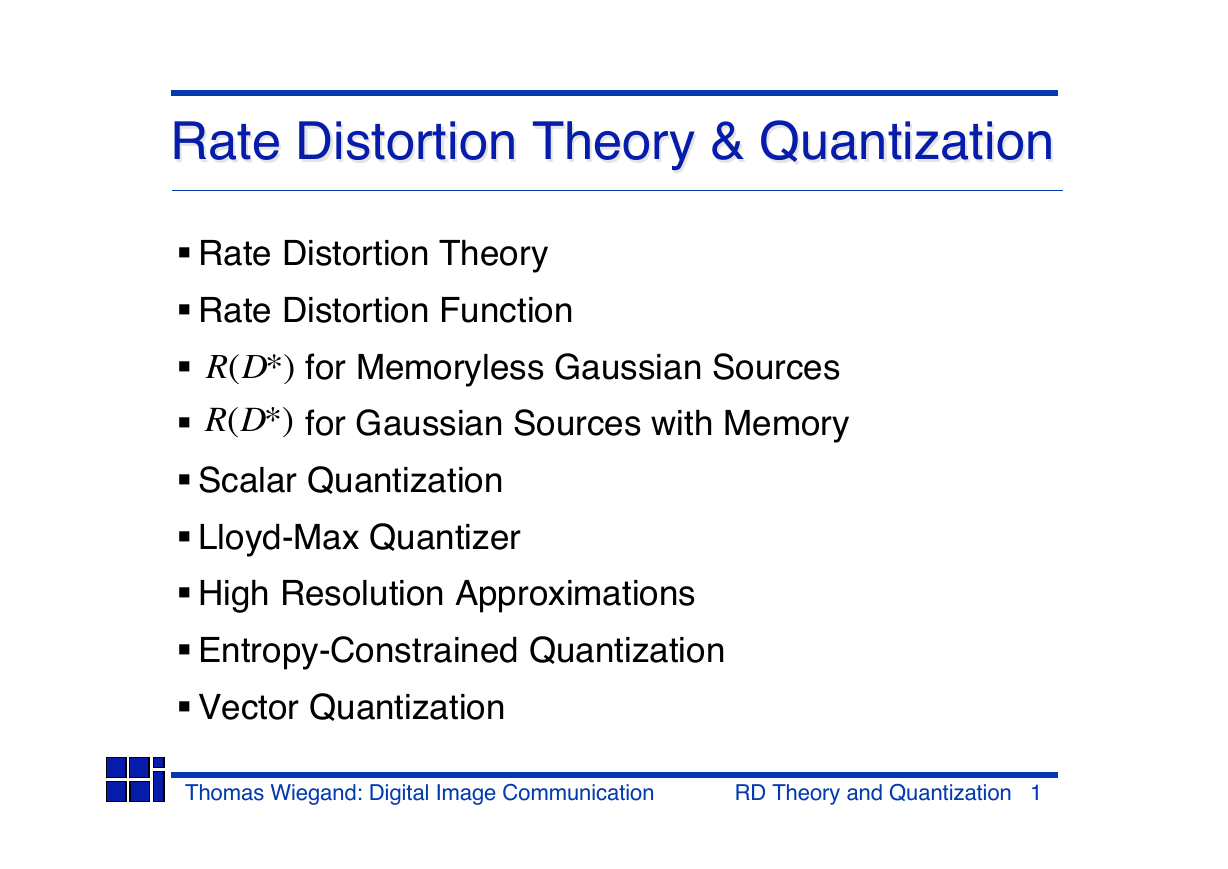
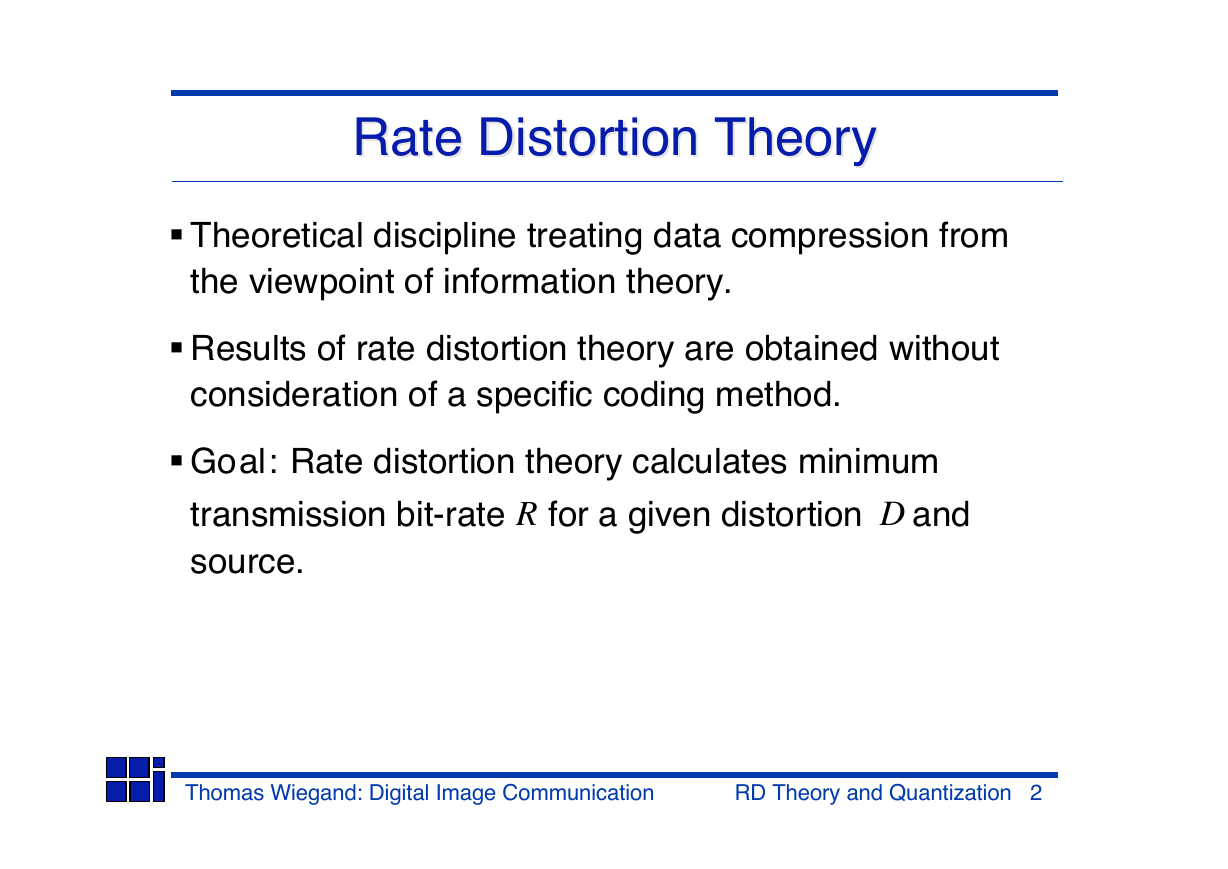
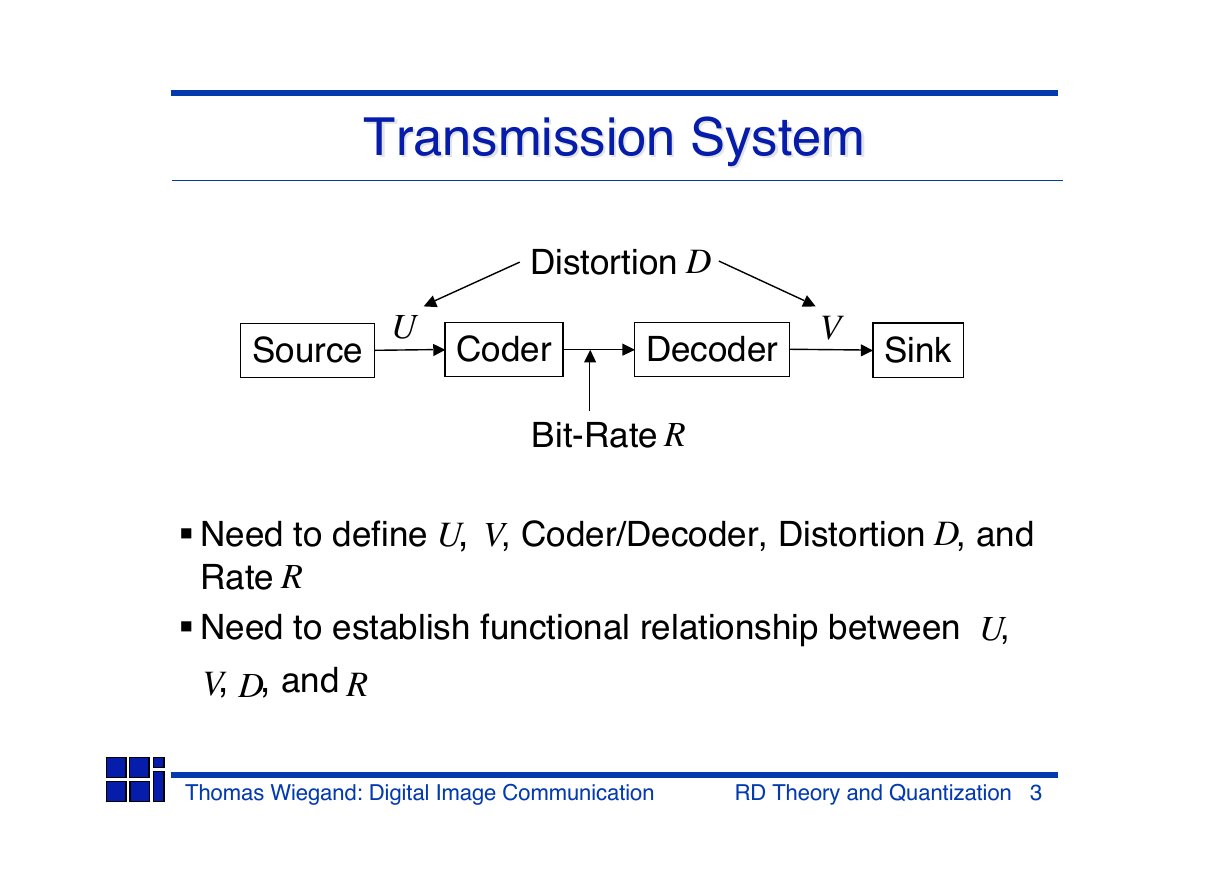
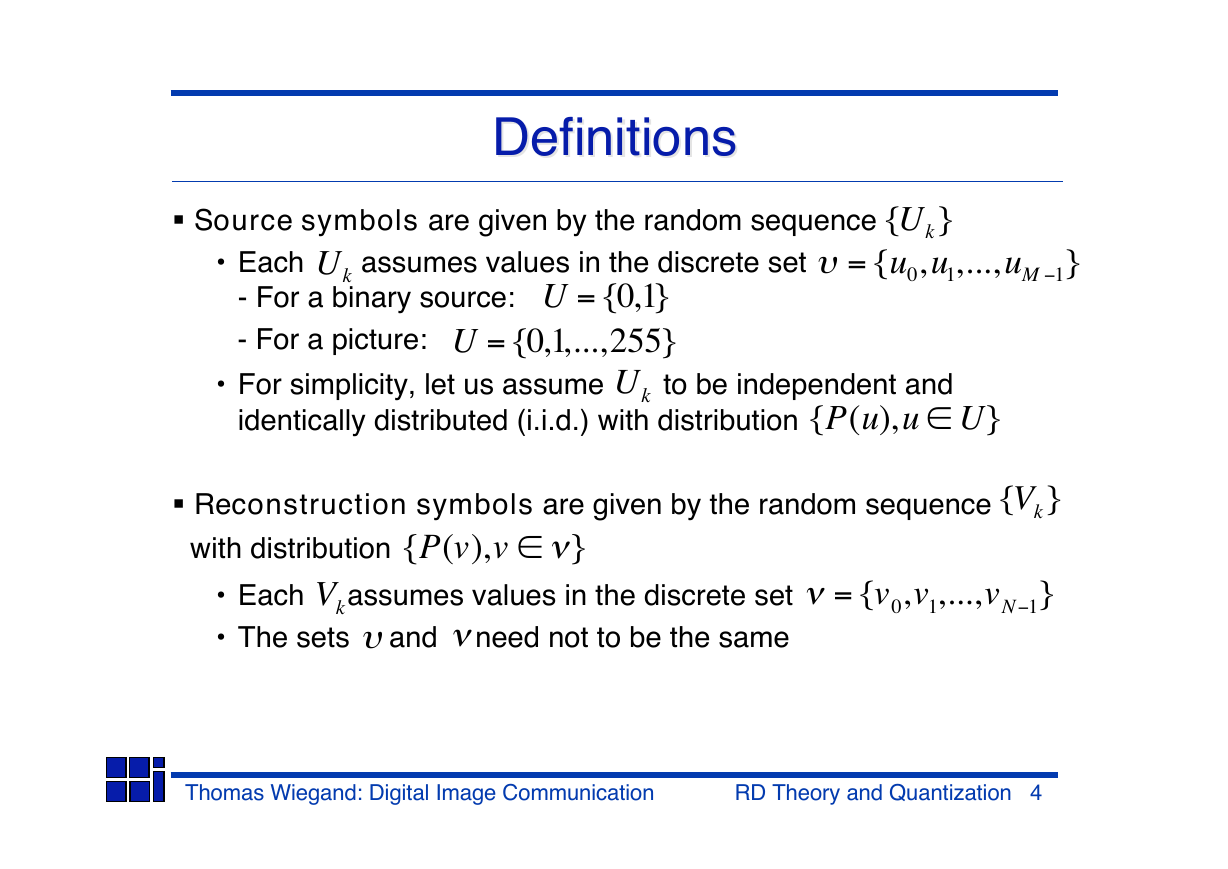
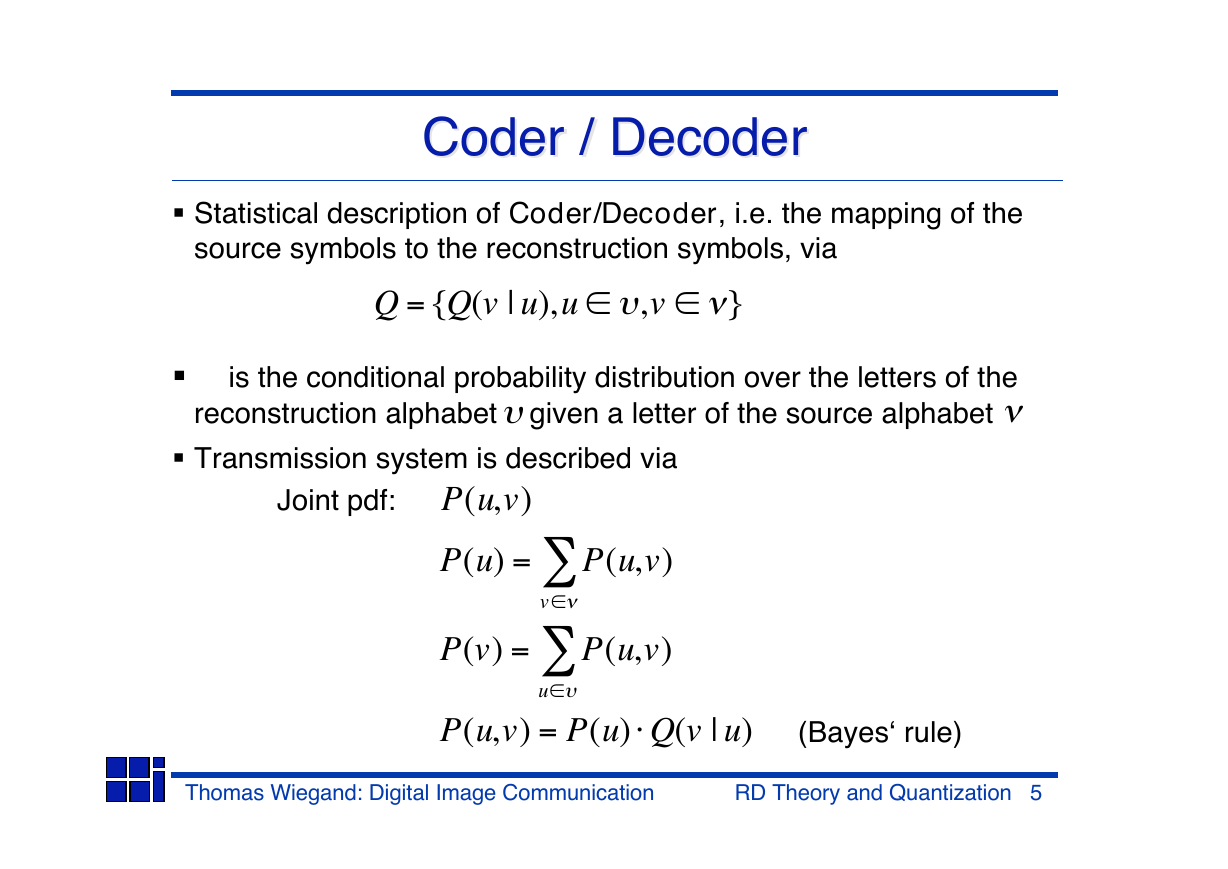
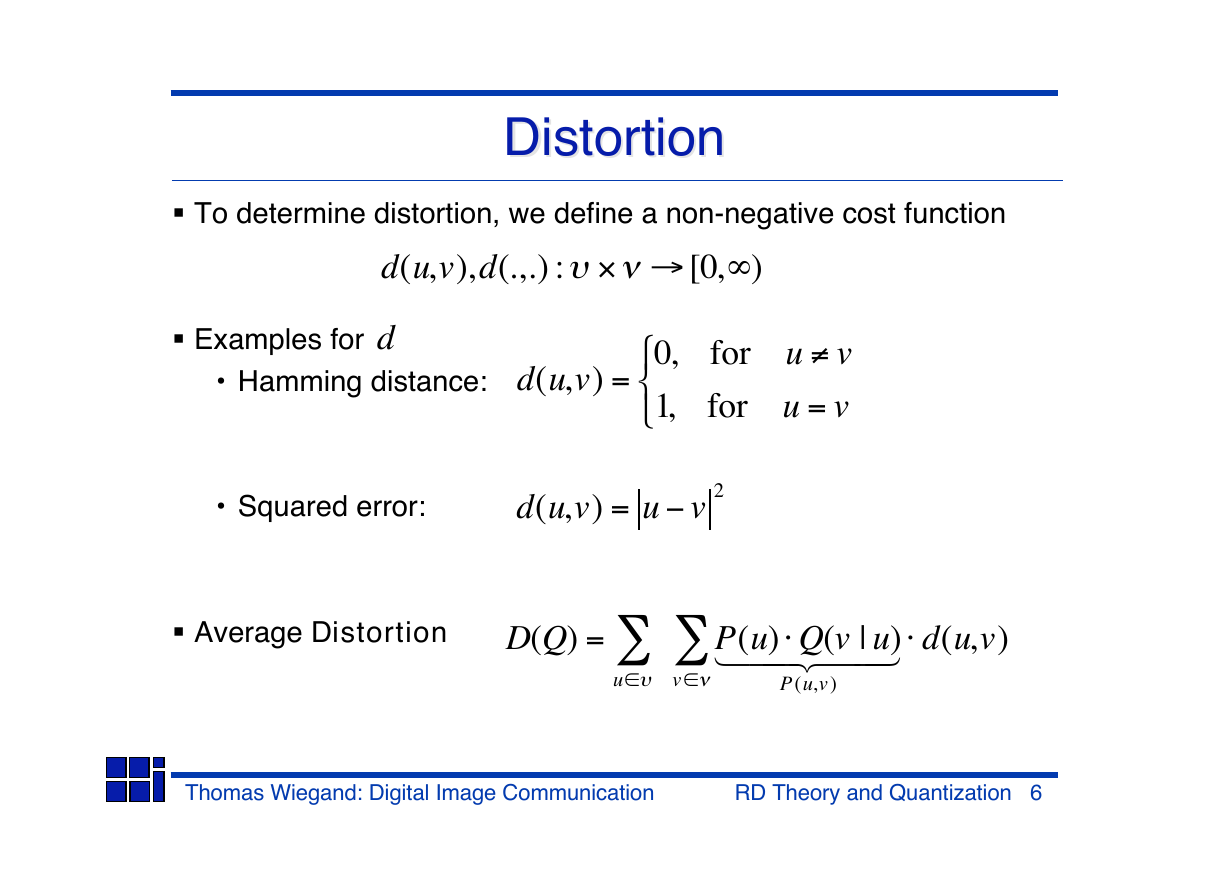
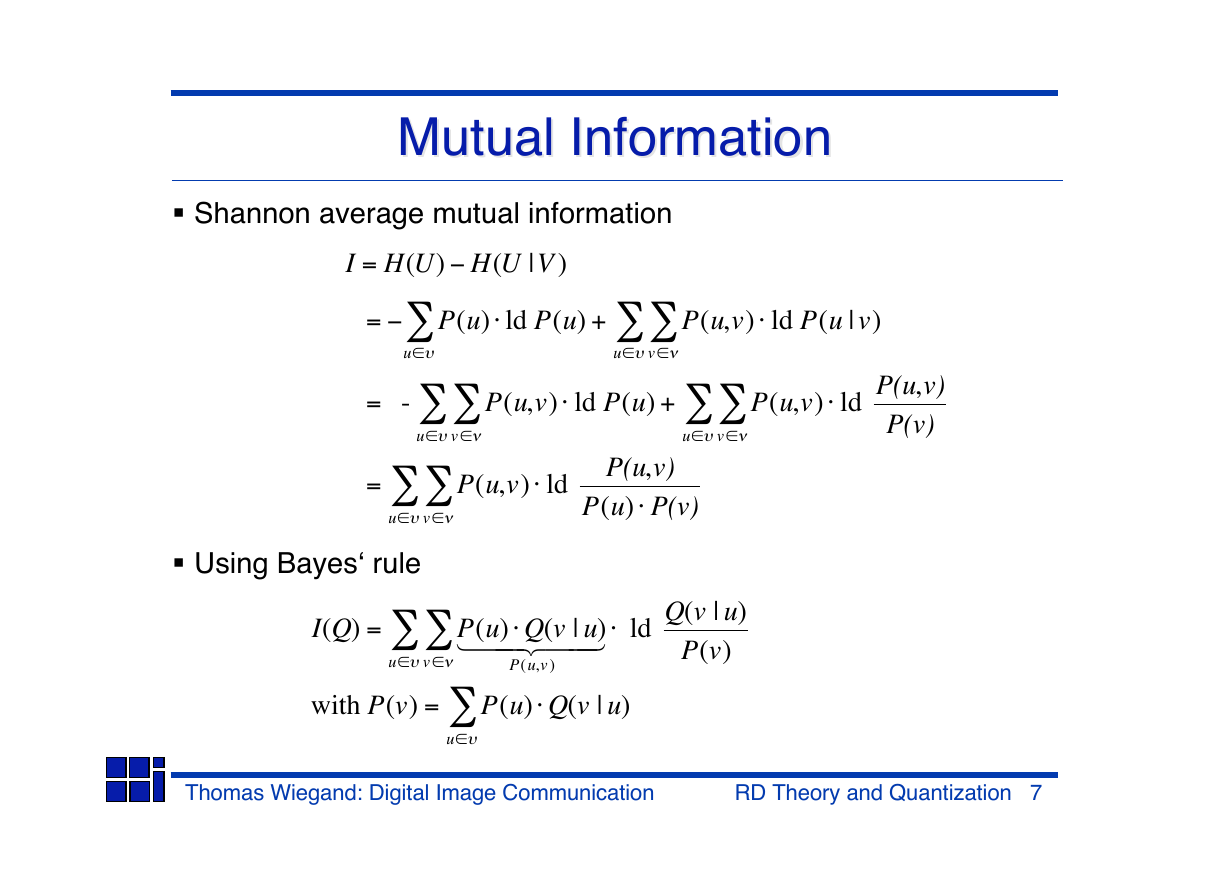









 2023年江西萍乡中考道德与法治真题及答案.doc
2023年江西萍乡中考道德与法治真题及答案.doc 2012年重庆南川中考生物真题及答案.doc
2012年重庆南川中考生物真题及答案.doc 2013年江西师范大学地理学综合及文艺理论基础考研真题.doc
2013年江西师范大学地理学综合及文艺理论基础考研真题.doc 2020年四川甘孜小升初语文真题及答案I卷.doc
2020年四川甘孜小升初语文真题及答案I卷.doc 2020年注册岩土工程师专业基础考试真题及答案.doc
2020年注册岩土工程师专业基础考试真题及答案.doc 2023-2024学年福建省厦门市九年级上学期数学月考试题及答案.doc
2023-2024学年福建省厦门市九年级上学期数学月考试题及答案.doc 2021-2022学年辽宁省沈阳市大东区九年级上学期语文期末试题及答案.doc
2021-2022学年辽宁省沈阳市大东区九年级上学期语文期末试题及答案.doc 2022-2023学年北京东城区初三第一学期物理期末试卷及答案.doc
2022-2023学年北京东城区初三第一学期物理期末试卷及答案.doc 2018上半年江西教师资格初中地理学科知识与教学能力真题及答案.doc
2018上半年江西教师资格初中地理学科知识与教学能力真题及答案.doc 2012年河北国家公务员申论考试真题及答案-省级.doc
2012年河北国家公务员申论考试真题及答案-省级.doc 2020-2021学年江苏省扬州市江都区邵樊片九年级上学期数学第一次质量检测试题及答案.doc
2020-2021学年江苏省扬州市江都区邵樊片九年级上学期数学第一次质量检测试题及答案.doc 2022下半年黑龙江教师资格证中学综合素质真题及答案.doc
2022下半年黑龙江教师资格证中学综合素质真题及答案.doc